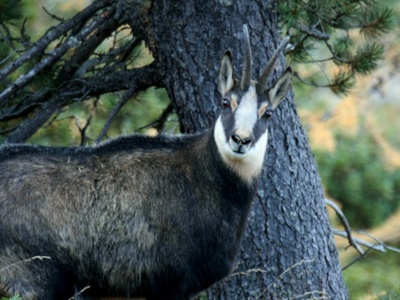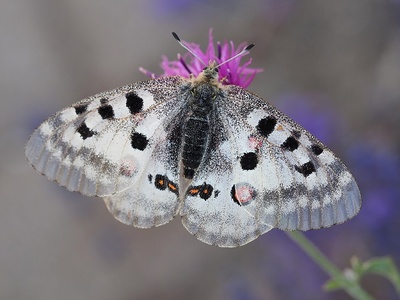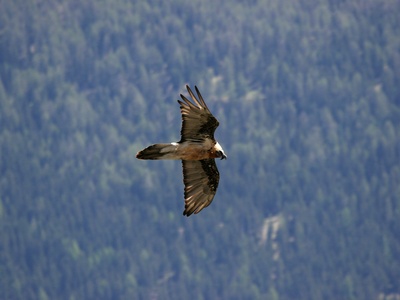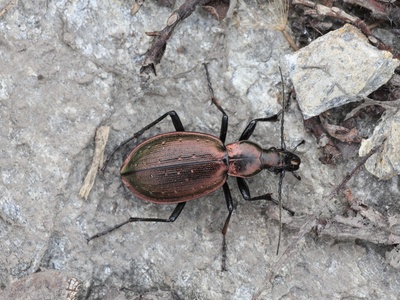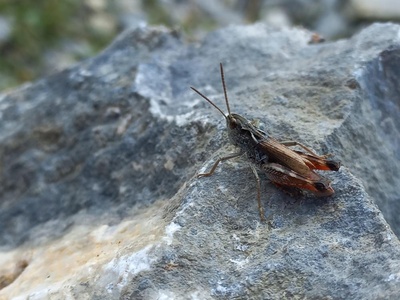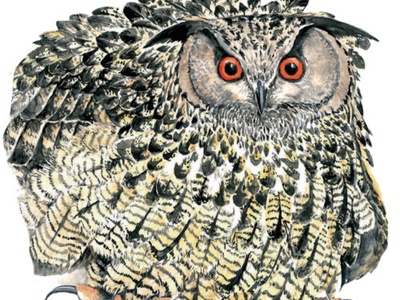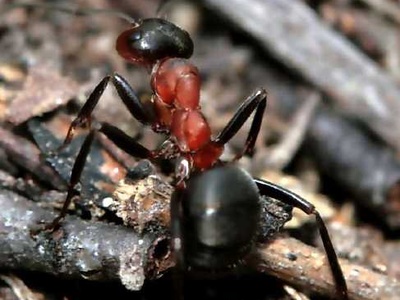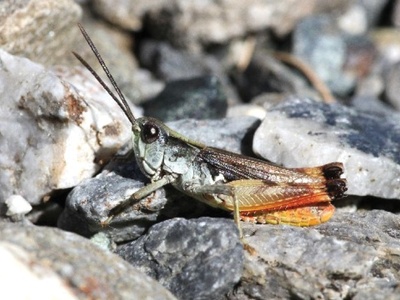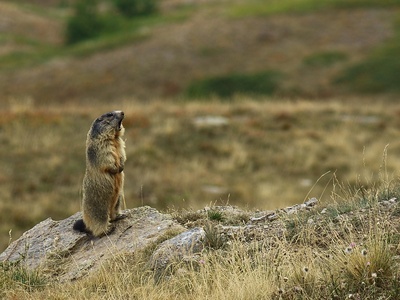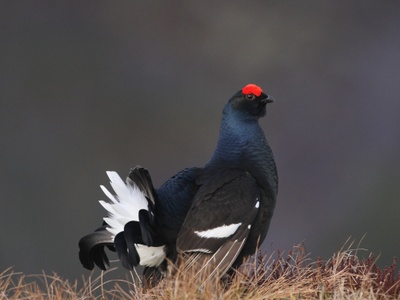Parcopedia
 Fauna
Fauna
The Apollo butterfly is a large diurnal butterfly with a wingspan that can exceed 5 cm. The wings are mainly white with black spots in the front area, while the hind wings have two or more red spots bordered in black with a white pupil.
 Fauna
Fauna
It can reach 2.90 m wingspan and weigh 7 kg. These characteristics make it the largest bird in the Alpine region. Moreover, it is the only species among vultures capable of feeding on bones thanks to some morphological and behavioral adaptations. Its body structure places it in an intermediate position between a raptor and a vulture, after all, its name derives from the Greek terms gyps (vulture) and aetos (eagle).
 Fauna
Fauna
l Carabus cychroides is an endemic beetle found in a few very limited areas of the Cozie Alps, mostly within our protected areas.
It is an insect that is strongly threatened by climate change. It lives in cavities in high-altitude pastures and in moraine areas facing north, where the snow remains longer.
 Fauna
Fauna
The Conca Cialancia grasshopper, discovered in 1986, is a rare endemic species of the Cottian Alps. It lives only at high altitudes, above 2000 meters, in meadows on sunny slopes. It has bright colors: gray-blue and red in males, camouflaged in females. The stridulating song of the males attracts the females. A truly special insect!
 Fauna
Fauna
The Eurasian eagle-owl is the largest nocturnal bird of prey in Europe and one of the most majestic birds in our mountains. Its wingspan can reach and exceed 180 centimeters, while its weight typically ranges from 2 to 3.5 kilograms, with females being sturdier than males. It is unmistakable for its large bright orange eyes and the tufts of feathers on its head, which resemble ears and are raised particularly when it is alert.
 Fauna
Fauna
In the Park, in the coniferous forests, there are large nests of red wood ants of the Formica rufa group, useful for biological control. There are 4 similar species with complex social lives. The workers perform various tasks, the queens lay eggs, and the males mate with the queens during the nuptial flight. The nests can be large and accommodate up to 1 million ants.
 Fauna
Fauna
Chorthippus (Glyptobothrus) pullus (Philippi, 1830) is a rare insect belonging to the order Orthoptera, heavily threatened with extinction in Italy and Europe due to the destruction of natural habitats, consisting of wide riverbeds characterized by flow dynamics that are not altered by humans.
 Fauna
Fauna
The marmot is a diurnal rodent that lives in alpine meadows. It feeds on plants and insects, digs complex burrows, and hibernates from October to April. The young are born after 30-35 days of gestation and remain in the burrow for 40 days. The main predators are the golden eagle and terrestrial carnivores.
 Fauna
Fauna
The black grouse, also commonly known as the capercaillie (Lyrurus tetrix), is one of the species that make up the typical alpine fauna. The adult male has black plumage with metallic blue highlights, white-edged wings, a deeply forked "lyre-shaped" tail, and red wattles above the eyes, which become particularly prominent in spring. The female, smaller and with brown-mimetic plumage, blends in with the surrounding environment and is less conspicuous.
